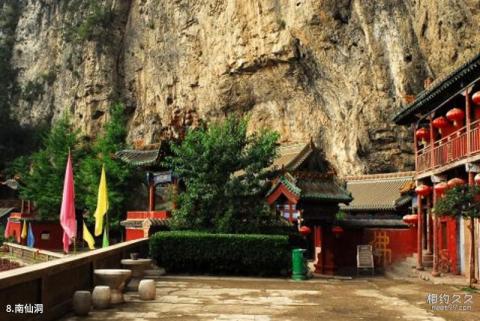
Introduction to Nanxiandong: Nanxiandong was the place where Taoism was established in history. Taoist priests Huangfu Jing in the Song and Jin Dynasties, and Taoist priests Ren Zhizhen and Wang Deren in the Yuan Dynasty practiced here. In the Yuan Dynasty, Ren Zhizhen and Wang Deren, under the command of the Grand Master Dongming Zhenqi, built more than ten palaces and pavilions here, giving a new look to the statues of the Three Invitations, the Four Emperors, the Five Ancestors and the Seven Immortals. During the Zhengde period of the Ming Dynasty, Buddhist monks from Mount Wutai opened the mountain gate, built the main hall, and added the Biyan Temple. In the eighth year of Tongzhi in the Qing Dynasty, the Biyan Temple was rebuilt, and the architectural layout of the Patriarch Hall on the west, Wei Tuo Hall on the east, and Guanyin Pavilion on the north was built, forming the basic outline of Nanxian Cave. The upper gate of Nanxiandong is the Xuandi Tower, the lower one is the aisle, the upper second gate is the Le Tower, and the southwest is the cross-street stage. The entire Nanxian Cave, dominated by Xinglong Temple, consists of Shenju Cave, Biyan Temple, Guanyin Pavilion, theater building, more than 70 houses, and more than 40 cave dwellings.
